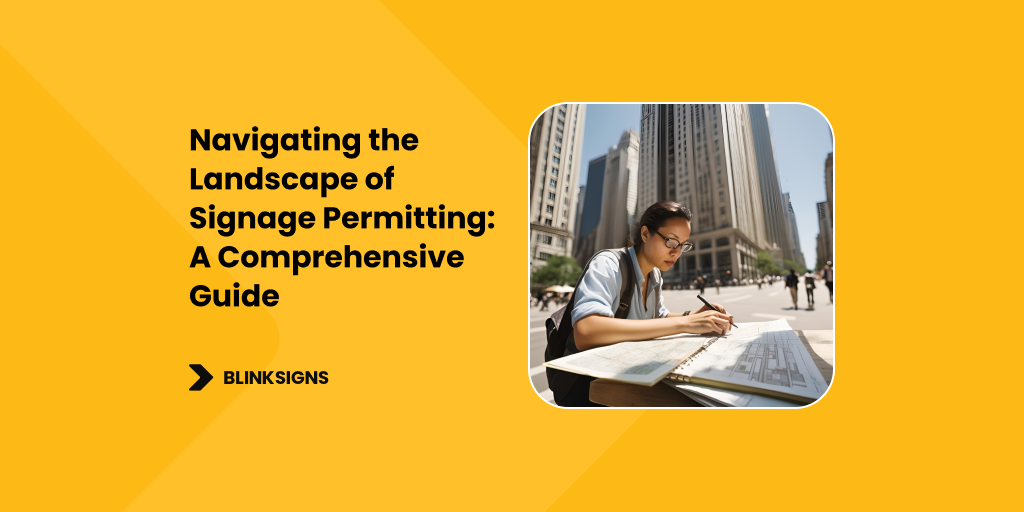
Navigating the Landscape of Signage Permitting: A Comprehensive Guide
Securing the right signage for your business isn’t just about choosing the right design; it’s also about navigating the complex world of signage permitting. Without the proper permits, your signs could lead to fines, removal, or costly delays.
This guide will help you understand the intricacies of signage permits and how to ensure compliance so that your business can avoid these pitfalls.
At BlinkSigns, we make it our mission to help businesses like yours succeed by managing every step of the signage permitting process.
Understanding the Basics of Signage Permitting
Before you install any sign, it’s essential to know that signage permits are often a legal requirement. They ensure your signage complies with local regulations, including safety, aesthetic, and zoning laws.
These regulations can vary significantly depending on your city, county, or even your neighbourhood, and failure to obtain the necessary permits can lead to penalties such as fines or forced sign removal.
For many business owners, navigating the maze of local signage laws and zoning ordinances can be intimidating.
Some areas may have strict limits on sign height, illumination, or the types of signs allowed in specific zones, while others may regulate the materials used in signage construction. In certain cases, even the colour schemes can be subject to approval, especially in historically significant areas or environmentally sensitive zones.
BlinkSigns provides expertise in handling this process by ensuring that your signage complies with all local laws from the outset.
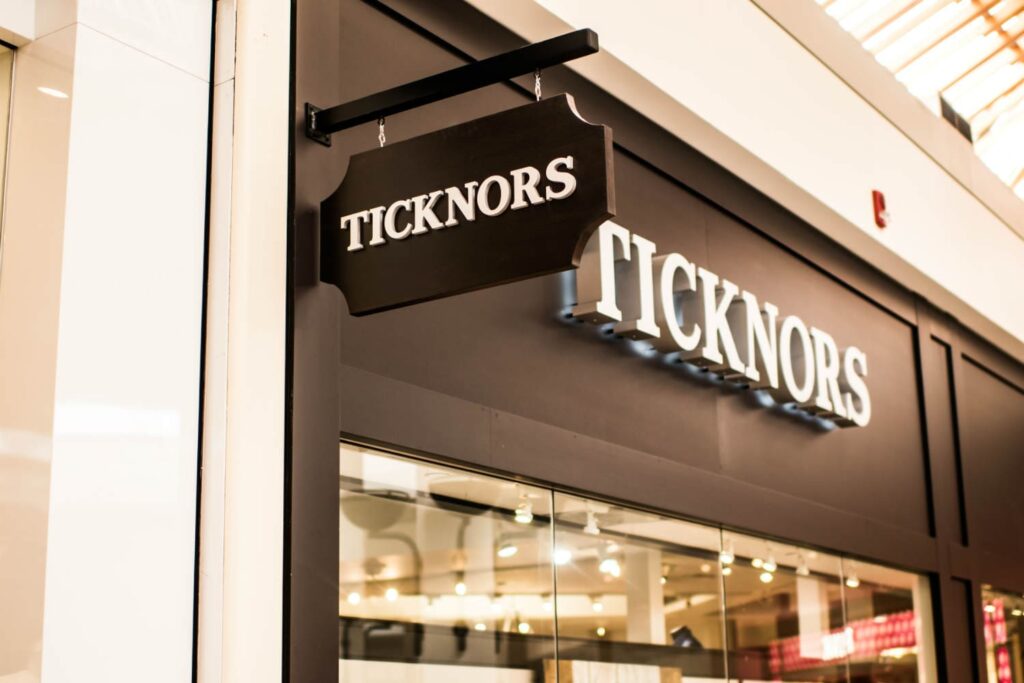
Ticknors Blade sign
By working with professionals who understand these regulations, you can avoid common issues like sign denials, reapplication delays, or costly modifications.
Types of Signage Permits: Choosing the Right One for Your Business
One of the first steps in obtaining a sign permit is determining the type of permit you need. Signage permits are not one-size-fits-all; there are several categories depending on the sign’s type, location, and usage.
Each permit comes with its own set of requirements, fees, and approval processes, so selecting the right one from the start is crucial for keeping your project on schedule.
Here are a few types of signage permits and their key requirements:
| Permit Type | Key Features | Best Suited For | Requirements |
| Building Permit | Required for structural signage installations like monument signs or pylon signs. | Large businesses, retail complexes, and corporate offices. | Detailed structural plans, compliance with zoning laws, height restrictions, and setback regulations. |
| Electrical Permit | Necessary for illuminated signs, including LED signs, neon signs, and digital signs. | Restaurants, retail stores, and businesses with 24/7 signage. | Compliance with electrical codes, proof of safe installation, and verification of illumination levels to avoid light pollution. |
| Temporary Sign Permit | Covers temporary signs for promotions, sales, or seasonal events. | Event venues, pop-up shops, temporary installations. | Duration limits, size restrictions, and removal obligations once the event or promotion ends. |
| On-Premise Sign Permit | Permits for signs on the business’s property, such as storefront and wall signs. | Brick-and-mortar retail stores, office buildings. | Compliance with local zoning laws, signage visibility, and structural safety. |
| Off-Premise Sign Permit | Signs such as billboards must be located away from the business premises. | Businesses using third-party advertising spaces. | Approval from property owners, adherence to highway visibility laws, and size limitations. |
| Monument Sign Permit | For freestanding signs that sit at ground level, often used for business parks or building entrances. | Corporate campuses, large facilities. | Compliance with local aesthetic guidelines, size, and setback requirements from roads and walkways. |
| Digital Signage Permit | Covers electronic and digital displays that change content dynamically, such as video walls. | Large retail stores, malls, and event venues. | Brightness regulations, approval of content change frequency, and structural integrity for the display unit. |
| Historical District Sign Permit | Required for businesses located in historical or culturally protected areas. | Businesses in historical zones, landmarks. | Sign designs must align with historical preservation guidelines, and materials and colours must reflect the area’s heritage. |
Each type of sign permit serves a unique purpose and has specific requirements to ensure the sign is safe, compliant, and effective in its environment.
BlinkSigns helps businesses identify which permits are needed and handles the application process, ensuring that nothing is overlooked.
Key Steps in the Signage Permit Application Process
Navigating the signage permit application process involves multiple steps that require precision and attention to detail.
A common misconception is that applying for a signage permit is a simple formality. Still, in reality, it involves submitting various documents, including site maps, engineering plans, and environmental assessments in some cases.
The process typically begins by preparing detailed architectural plans of the proposed sign. These plans should include dimensions, materials, lighting specifications, and placement on the property.
Many local jurisdictions also require site maps showing where the sign will be installed in relation to property lines, roads, and other buildings.
Once all the documentation is ready, it’s time to submit your application to the local zoning department or city planning board. This is often followed by a review process where city officials assess whether the sign complies with local ordinances and zoning restrictions. Public hearings may be necessary in certain cases, especially if the sign affects the broader community, such as large-scale billboards.
BlinkSigns streamlines this process by managing all communication with local authorities. This ensures your application is complete and aligned with regulations, preventing costly delays or denials.
City-Specific Signage Permitting Criteria
| City | Key Focus Areas | Types of Signage Permitted | Specific Regulations |
| San Francisco | Environmental Impact, Historical Preservation | Outdoor signage, Illuminated signs, Digital displays | It requires environmental impact assessments and compliance with light pollution regulations. Signs must blend with architectural style in historical districts. |
| Las Vegas | Illumination, Visibility, Energy Efficiency | Digital billboards, Neon signs, LED displays, Pylon signs | Focus on brightness limits for high-traffic advertising. Must comply with energy efficiency regulations and prevent light pollution in residential areas. |
| New York City | Zoning Regulations, Structural Safety | Digital signage, Storefront signs, Billboards, Monument signs | Strict zoning and size limitations in Manhattan, especially for Times Square. Building codes require structural stability assessments for large signs. |
| Chicago | Aesthetic Preservation, Wind Resistance, Energy Efficiency | LED displays, Pylon signs, Monument signs, and wall-mounted signs | Must maintain historical building integrity in The Loop. Signs require wind resistance certification, and energy-efficient LED displays are encouraged. |
| Miami | Weather Resistance, Storm Protection, Durability | Hurricane-proof signage, Monument signs, Pylon signs, Event banners | All outdoor signage must meet hurricane-resistant standards, with specific permits required for wind-resistant materials like reinforced aluminium or steel. |
| Seattle | Environmental Sustainability, Light Pollution | Eco-friendly signage, Water-based inks signage, Recyclable materials signage | Emphasis on environmentally sustainable materials such as recyclable signs. Digital signage must follow brightness limitations to reduce light pollution. |
| Boston | Historical Preservation, Aesthetic Consistency | Traditional signage, Dimensional letters, Outdoor advertising | Strict requirements for period-appropriate materials and traditional signage in historical districts. Modern signage, like LED displays, requires additional approvals. |
| New Orleans | Historical Integrity, Cultural Preservation | Culturally appropriate signage, Eco-friendly signage, Monument signs | Signage materials must conform to the area’s cultural and historical context, particularly in the French Quarter. Compliance with environmental guidelines is required. |
Explanation of Key Regulations
- Environmental Impact Assessments (San Francisco & Seattle): Businesses in environmentally sensitive areas must submit detailed reports to ensure that signage does not negatively impact the environment. This might include using low-energy and recyclable materials.
- Illumination and Brightness Limits (Las Vegas & Seattle): For cities with heavy traffic and urban density, illuminated signage such as LED displays must comply with light pollution ordinances to protect nearby residential neighbourhoods.
- Wind and Weather Resistance (Miami & Chicago): Cities like Miami enforce strict standards to ensure signs can withstand high winds and extreme weather, requiring durable materials like reinforced steel or hurricane-proof designs.
- Zoning Regulations (New York City): In densely populated areas like Manhattan, signage must comply with specific zoning regulations that control size, placement, and even structural stability for large-format displays in high-traffic areas.
- Historical Preservation (Boston, San Francisco, New Orleans): In historical districts, signage must use traditional materials and conform to aesthetic standards that preserve the area’s cultural integrity. This is common in cities with significant historical landmarks.
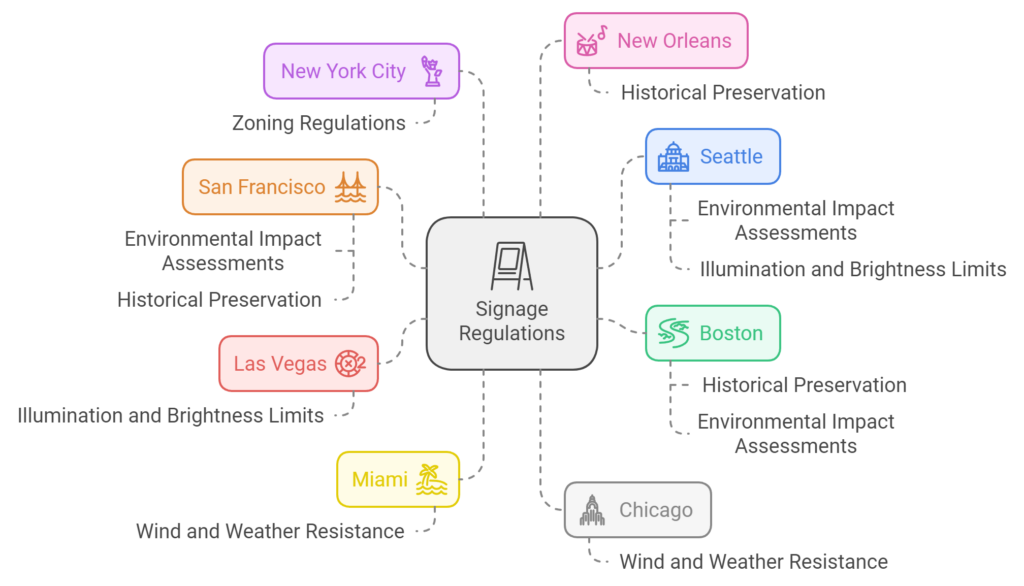
Signage Regulations
Signage Categories: An In-Depth Overview
Signage comes in various forms, each designed to serve different purposes, and they are subject to a range of regulations depending on their type, location, and usage. Each signage category has unique regulatory requirements, from zoning laws to permits that ensure compliance with safety, visibility, and environmental impact standards.
Below is a detailed breakdown of the major categories of signage, their typical applications, and the necessary regulations businesses must adhere to.
Outdoor Signage
Outdoor signage includes any sign that is visible from the outside of a business or establishment and is designed to attract external attention. Due to its high visibility, this category is subject to some of the strictest regulations and permitting processes. The most common types of outdoor signage include:
- Billboards: Large-scale advertising structures that require specific zoning permits based on height, size, and placement. Billboard permits also typically involve environmental assessments, particularly in areas near residential neighbourhoods or natural parks, to avoid visual clutter and light pollution.
- Digital Displays: Often seen on highways and urban centres, digital billboards and LED signs are popular for their ability to change content dynamically. However, these signs are regulated by brightness limits and energy efficiency standards to prevent light pollution and reduce power consumption.
- Storefront Signs: These include channel letter signs, blade signs, and awning signs, which are mounted on or near a business’s physical location. Permits for storefront signage often involve building code compliance and safety regulations, especially in areas prone to severe weather conditions, where signage must meet durability and wind resistance standards.

Commercial Awning Sign
Outdoor signs must also consider sustainability practices, with cities like Seattle requiring eco-friendly materials like recycled vinyl, aluminium, and solar-powered LED signs to minimize environmental impact.
Indoor Signage
While indoor signage typically faces fewer permitting challenges than outdoor signs, it still plays a crucial role in a business’s overall branding and functionality. These signs are generally located inside a building and include:
- Directional Signs: Often used for wayfinding in large spaces such as malls, hospitals, or corporate offices. These signs guide visitors to key areas and must comply with ADA guidelines to ensure accessibility for all individuals, including those with disabilities.
- Informational Placards: Common in educational institutions and offices, informational signs may display important messages or operational instructions. These signs may require permits if they involve emergency information or must comply with fire safety regulations.
- Promotional Displays: Indoor point-of-purchase (POP) displays are widely used in retail environments for promotional purposes. While these generally do not require the same level of permits as outdoor signs, they must still meet fire and safety codes to ensure they do not obstruct emergency exits or pathways.
Indoor signage also encompasses digital kiosks and interactive displays, which are subject to data privacy regulations in some regions if they collect information from customers.
Illuminated Signage
Illuminated signage includes any sign that is equipped with lighting, whether it’s internal or external illumination. These signs are highly effective in boosting visibility during the evening or in low-light environments, making them popular for businesses that operate at night. However, illuminated signs must meet specific regulations:
- Neon Signs: Once the hallmark of high-traffic entertainment districts like Las Vegas, neon signs are now regulated for both their energy consumption and brightness levels. Businesses need permits to ensure these signs comply with light pollution ordinances, especially in areas close to residential buildings.
- LED Displays: These are increasingly replacing neon due to their energy efficiency and durability. LED signs are also highly customizable, allowing businesses to display dynamic content. However, they are subject to local rules concerning brightness, colour temperature, and content change frequency to prevent distractions for drivers and maintain community safety.
- Backlit Signs: Common for channel letters or dimensional signs, backlit signs use LED or fluorescent lighting to enhance visibility. These signs must secure electrical permits to ensure they meet safety standards and energy codes.
In some cities, businesses may need to use eco-friendly illumination solutions, such as solar-powered LED signage, to align with local sustainability goals.
Temporary Signage
Temporary signage is typically used for short-term promotions, events, or seasonal advertising. While these signs are not permanent, they still require special permits to ensure they are installed and removed within a specified timeframe:
- Event Banners: These are used to promote sales or community events and are often installed temporarily in public areas. They must adhere to strict size and placement regulations, ensuring they do not obstruct traffic or pedestrian pathways.
- A-Frame Signs: Often seen outside cafes and restaurants, A-frame signs are mobile, free-standing displays that are perfect for advertising daily specials. Though typically requiring fewer permits, some cities may restrict their usage on sidewalks or require removal after business hours to avoid clutter.
- Construction Signs: During renovations or new developments, construction signs are used to display key project information. These signs must meet building site regulations and may require temporary permits to ensure they are securely fastened during ongoing construction activities.
Many cities have time restrictions on using temporary signage, meaning permits will specify a date range for when the signs must be displayed and removed. In some regions, businesses are encouraged to use recyclable signage materials like foamcore or PVC for temporary displays to reduce waste.
Compliance with Local Signage Laws and Zoning Ordinances
Every city and county enforces specific signage laws that govern aspects such as size, placement, lighting, and overall design. In areas with high pedestrian traffic, businesses may face additional restrictions, particularly concerning sign visibility, pedestrian safety, and maintaining the area’s aesthetic quality.
For example, in many downtown districts, cities may limit pylon sign height or require certain types of monument signs. This is to ensure a cohesive appearance along business corridors. Illuminated signage, such as digital billboards or backlit LED signs, often has lighting regulations to minimize pollution in residential areas.
Incorporating compliance into signage planning avoids costly changes later. By understanding these local laws, BlinkSigns ensures that your business signage is approved smoothly, allowing you to focus on other aspects of your business.
Electrical Permits for Illuminated and Digital Signage
An electrical permit is typically required for businesses that plan to install illuminated signs, including LED displays, backlit logos, or digital billboards. This permit ensures that the electrical work behind the signage is installed safely and adheres to local electrical codes.
Electrical permits are often needed for signs that operate 24/7 or are installed in high-traffic areas. Improperly installed illuminated signs can pose risks, such as electrical shorts, fire hazards, or malfunctions that could cause accidents.
Obtaining an electrical permit also ensures that the sign’s brightness and illumination levels comply with local regulations. Cities may have specific rules about how bright a sign can be, especially in areas near residential neighbourhoods or natural reserves.
All aspects of the electrical permit process are handled by BlinkSigns’ professional team of licensed electricians. A legal and safety-compliant illuminated sign will be created this way.
Environmental and Historical District Regulations
Businesses located in environmentally sensitive areas or historical districts often face additional hurdles when applying for signage permits. These areas are typically subject to strict regulations designed to protect local character, cultural heritage, and the environment.
Signage must align with the area’s architectural style and historical significance in historical districts. This might include using materials that match the aesthetic of the surrounding buildings or avoiding modern, illuminated signs that clash with the area’s cultural heritage.
It is recommended that signage be minimal, unobtrusive, and low-key lighting. Clearly visible and legible signs should also be designed to be seen from a distance.
Similarly, businesses may be required to use low-energy lighting, such as solar-powered LED signs, in environmentally sensitive areas to minimize their environmental footprint.
Signage designed by BlinkSigns meets these specialized requirements while still meeting your business goals. Whether you need to preserve a building’s historic charm or reduce environmental impact, we ensure your signage reflects compliance and creativity.
Avoiding Common Mistakes in Signage Permitting
The process of securing a signage permit can be complicated, and even minor errors in the application can result in delays or rejections. Common mistakes include submitting incomplete applications, failing to include architectural renderings, or neglecting to obtain electrical permits for illuminated signs.
Signage permitting can be intricate, and even small errors can cause delays or permit denials. Some common mistakes include:
- Submitting incomplete documentation, such as missing site maps or architectural drawings.
- Failing to account for local zoning laws, like height restrictions or setback requirements.
- Neglecting to obtain an electrical permit for illuminated signs, such as LED displays or backlit signs.
- Not adhering to franchise guidelines for multi-location businesses.
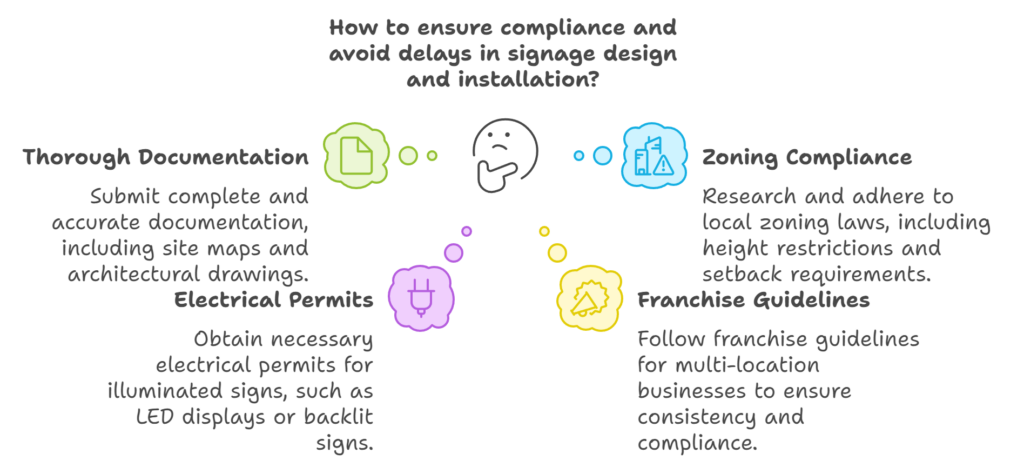
Signage Compliance
At BlinkSigns, we help businesses avoid these pitfalls by ensuring every application is complete and detailed to ensure the smoothest process and prevent unnecessary setbacks.
BlinkSigns checks for compliance with local ordinances and zoning laws in the design phase. This foresight saves time and prevents costly revisions later in the project.
Our expertise lets us catch potential problems before they occur, ensuring that your signage meets all requirements from day one.
Signage Zoning Disputes: How to Resolve Permit Issues
Businesses encounter zoning disputes or have signage permit applications denied. These denials often stem from non-compliance with local zoning regulations or objections from neighbouring businesses or residents. If your signage permit is rejected, addressing the issue quickly and thoroughly is imperative.
In many cases, you can appeal a zoning decision. The appeals process may involve submitting revised plans, attending public hearings, or negotiating with local zoning boards to find a compromise.
BlinkSigns guides businesses through the appeals process. We help them gather the necessary documentation, address objections, and present a strong case to the Zoning Board.
Resolving permit issues quickly is crucial to keeping your signage project on track. With BlinkSigns at your side, you can trust that we’ll advocate for your business and work to resolve any zoning disputes in your favour.
Benefits of a Professional Signage Permit Consultant
Hiring a signage permit consultant can streamline the permit process, saving you time and money. From the initial design and application process to the final installation, BlinkSigns offers end-to-end signage permit project management. Our team’s in-depth knowledge of local laws, zoning ordinances, and permit requirements allows us to anticipate challenges and avoid delays.
A professional consultant will inspect your business signage to ensure it meets all regulatory requirements, preventing fines or removal. Using BlinkSigns doesn’t just mean getting an attractive sign; it’s also about knowing that your signage is approved and compliant.
Long-Term Benefits of Compliant Signage
Compliant signage benefits extend far beyond legal protection. When your business signage is properly permitted, it enhances your brand’s visibility and trustworthiness. Customers are likelier to engage with businesses that display professional, well-designed signs that clearly communicate their message.
Compliant signage also improves your community’s standing. By adhering to local guidelines and collaborating with local authorities, your business demonstrates its commitment to aesthetic and regulatory standards. This can build goodwill and improve relationships with neighbouring businesses and residents.
It is important that the signage we create for your business meets both your branding needs and all local laws at BlinkSigns. Knowing your investment is protected, and your brand is represented professionally can give your business confidence when you use compliant signage.
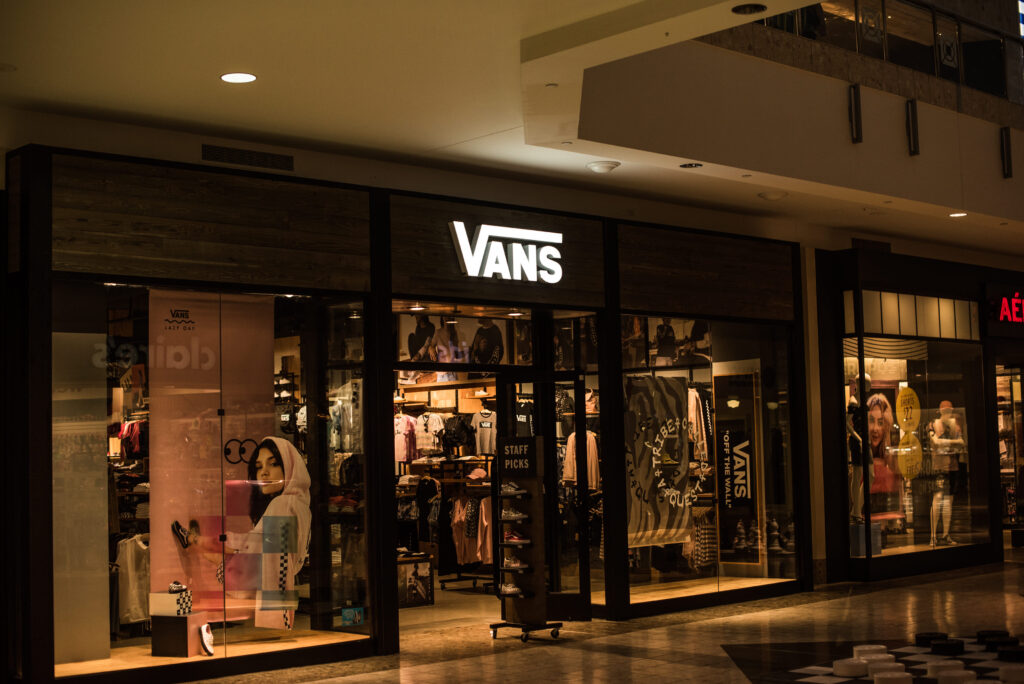
Storefront Sign Vans
Timeline and Costs for Signage Permits
The timeline for obtaining signage permits varies depending on your location, the type of sign, and the project’s complexity. It takes between 2 to 6 weeks to receive permit approval. However, this can be extended if public hearings or appeals are involved.
Signage permit costs also vary widely but typically include application fees, architectural review costs, and any fees associated with environmental or historical assessments. In some cases, expedited services may be available for an additional fee, allowing businesses to fast-track approval.
To manage budgets and avoid unexpected costs, BlinkSigns estimates the project’s timeline and costs for businesses.
Case Studies: Successful Signage Permitting with BlinkSigns
BlinkSigns has helped numerous businesses navigate the signage permitting process successfully. From large retail chains to small local businesses, our expertise has ensured that each project meets the necessary regulations while staying on budget and schedule.
In one case, a national retail chain, Amazon, required permits for monument signs in multiple states, each with its own unique set of regulations. BlinkSigns coordinated with local zoning boards, secured the necessary approvals, and ensured the signage adhered to each state’s requirements without delays.
Conclusion
navigating the world of signage permitting can be complex, but with the right expertise, it’s entirely manageable. At BlinkSigns, we take the stress out of the process by providing comprehensive support at every stage.
Whether you’re applying for a new sign permit, resolving a zoning dispute, or seeking expert advice on compliance, our team is here to help your business shine.
Contact us today at sales@blinksigns.com or visit our website to learn more about how we can help you navigate the complex world of signage permitting. Let us take the hassle out of the process, allowing you to focus on what you do best—running your business.
[…] guide is designed to walk you through New Jersey’s signage permitting process, offering insights to ensure your signage stands out and complies with local, county, and […]